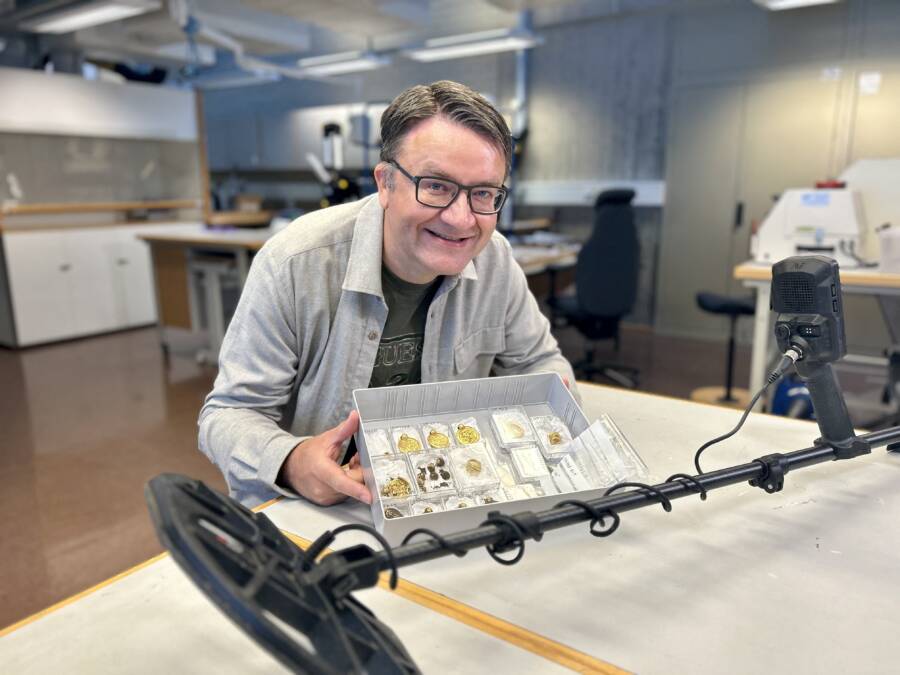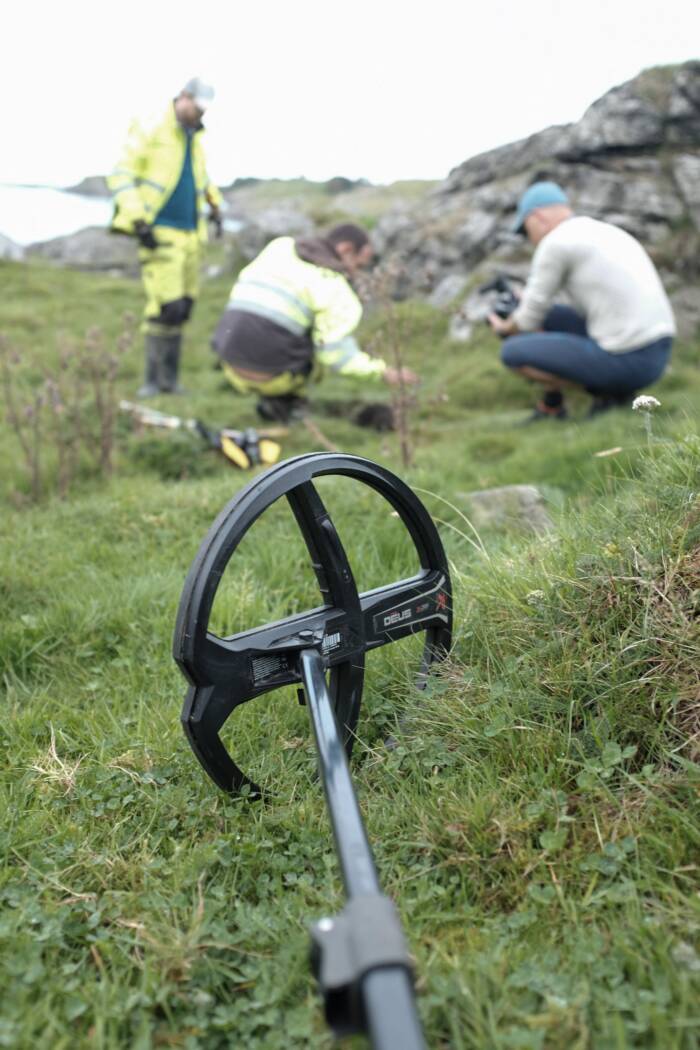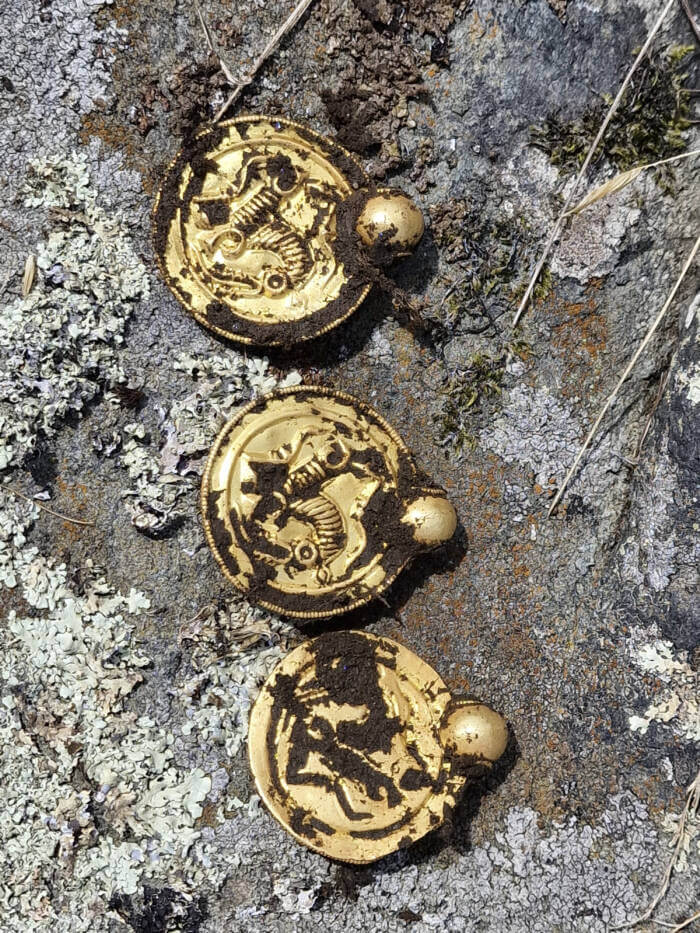The various gold objects date back to around 400 to 550 C.E. and likely belonged to someone in the social elite.

X (Formerly Twitter)Erlend Bore posing with the cache of gold he discovered while walking with his metal detector.
Per his doctor’s orders, 51-year-old Erlend Bore was out on a walk near his home on the island of Rennesøy, Norway. He had brought his metal detector with him, which he purchased earlier in the summer to have a hobby that would get him out of the house. When the device reacted to something in the soil, Bore thought it may have been chocolate money, based on its appearance.
What he had actually found, however, was a cache of nine gold pendants, three gold rings, and 10 gold pearls that once formed a flashy necklace around 1,500 years ago. Now, experts are calling the discovery the “gold find of the century.”
“At first I thought it was chocolate coins or Captain Sabertooth coins,” Bore told The Guardian, alluding to a fictional Norwegian pirate. “It was totally unreal.”
The discovery was a dream come true for Bore, who had dreamed of becoming an archaeologist as a child. More amazingly, he was new to the hobby of metal detecting, having just purchased his metal detector in August after his doctor recommended he get more exercise.
Bore had recently begun taking regular walks on the mountainous island, bringing his metal detector along with him. On one such walk, he was just getting ready to call it a day and return home when suddenly the device started beeping on a hillside.
Bore contacted local archaeologists, who ultimately dug up the gold cache.

X (Formerly Twitter)Archaeologists from the Stavanger Museum digging up the cache of gold objects.
Ole Madsen, head of the University of Stavanger’s Museum of Archaeology, said it was “the gold find of the century in Norway. To find that much gold all at once is extremely unusual.”
According to Norwegian law, Bore was not allowed to keep the coins he discovered. Under the law, any objects from before 1537, and coins older than 1650, are considered state property and must be handed in. On the bright side, both Bore and the landowner will receive an award for the discovery, though the sum has yet to be determined.
As for the gold items themselves, they were examined by several professionals at the Stavanger Museum. Associate professor Håkon Reiersen found that the gold pendants were flat, thin, one-sided gold medals known as bracteates and date back to between 400 and 550 C.E., a time referred to as the “migration period” in Norway due to the widespread migrations happening all across Europe.
Reiersen said the pendants and gold pearls were likely part of “a very showy necklace” made by skilled craftsmen for the social elite.

X (Formerly Twitter)The recovered medallions featuring a horse from Norse mythology.
“Given the location of the discovery and what we know from other similar finds, this is probably a matter of either hidden valuables or an offering to the gods during dramatic times,” he said, adding that “in Norway, no similar discovery has been made since the 19th century, and it is also a very unusual discovery in a Scandanavian context.”
Per the Associated Press, Professor Sigmund Oehrl, an expert on such pendants who also works at the Stavenger Museum, said that roughly 1,000 golden bracteates have been found in Norway, Sweden, and Denmark.
The medallions also feature an unusual design depicting a type of horse from Norse mythology. Oehrl explained that typically, symbols on these pendants show Odin, the god of war, healing the sick horse of one of his sons. Notably, however, Oehrl said the horse’s tongue on the Rennesøy pendants hangs out and “its slumped posture and twisted legs show that it is injured.”
“The horse symbol represented illness and distress, but at the same time hope for healing and new life,” he added.
The Archaeological Museum in Stavanger plans to put the find out on display.
After reading about this amazing discovery, read about the time a woman bought cheap costume jewelry online — and found a gold Viking ring in the mix. Or, read about the 10-year-old who found an 18th-century sword with a metal detector he had just received for his birthday.





